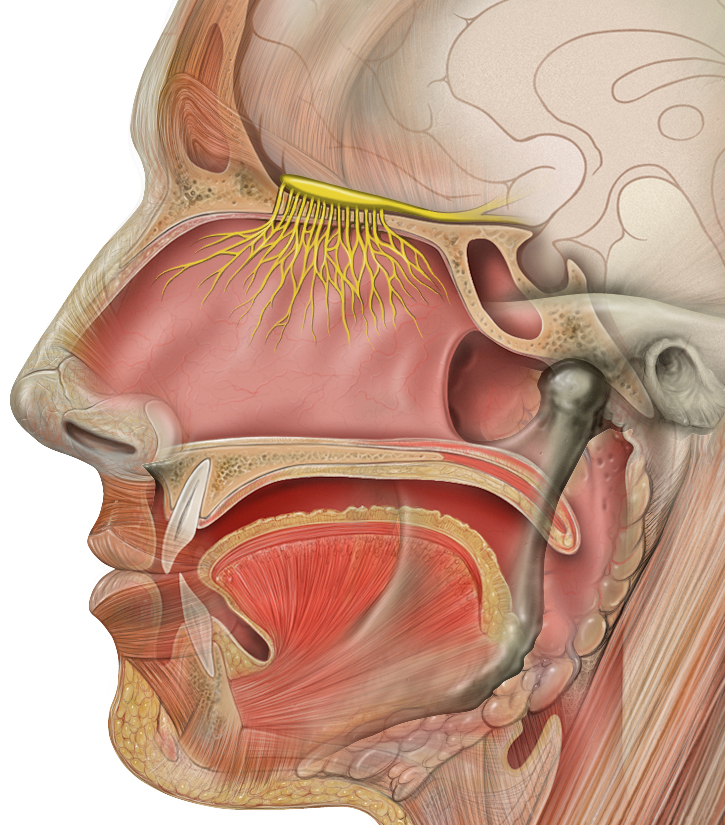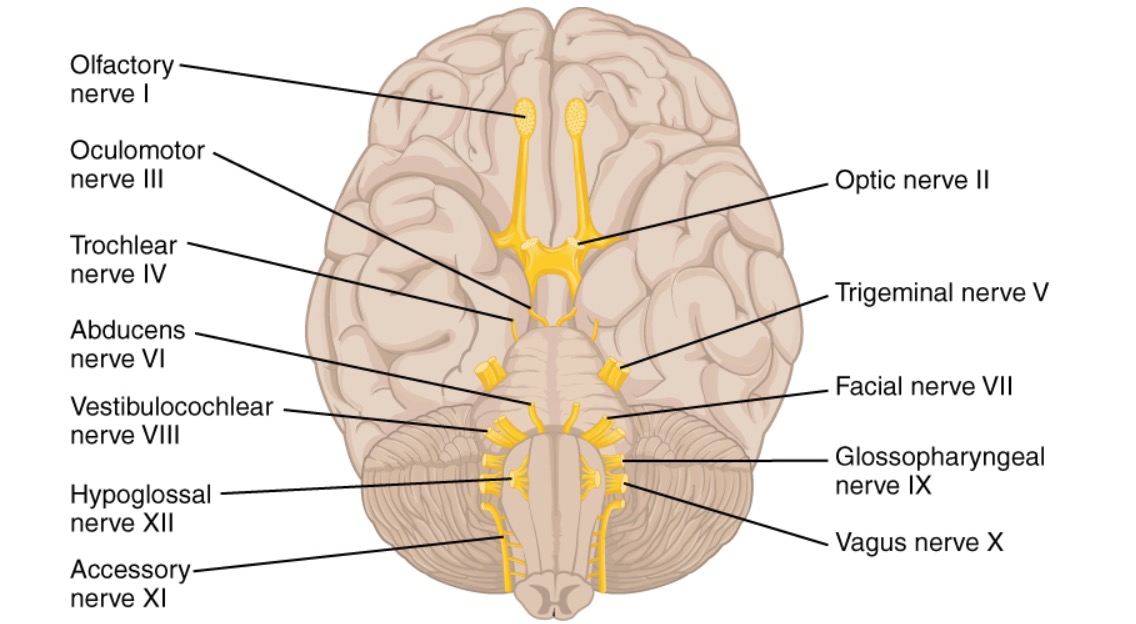Playlist
Show Playlist
Hide Playlist
Olfactory Nerve (CN I)
-
Slides Anatomy Olfactory Nerve CN I.pdf
-
Reference List Anatomy.pdf
-
Download Lecture Overview
00:02 So let's take a little bit closer look at cranial nerve one. 00:06 So cranial nerve one is the olfactory nerve. 00:10 And so it will actually begin in the olfactory epithelium of the nasal cavity. 00:16 And it's going to have these olfactory receptor cells with little dendrites that reach out into the fluid of the nasal cavity, trying to sample the fluid for any dissolved odors, and then transmit that information through axons past a special portion of the cranial cavity called the cribriform plate to synapse in this olfactory bulb at the base of the brain. 00:40 It will then travel via the olfactory tract all the way back to the olfactory processing centers where it concerns up to 10,000 different odors. 00:54 So here we see that olfactory epithelium of the nasal cavity, going through the cribriform plate treats the olfactory bulb traveling back through the olfactory tracks into the temporal lobe of the cerebrum, where it's going to be transmitted into the sensation of smell.
About the Lecture
The lecture Olfactory Nerve (CN I) by Darren Salmi, MD, MS is from the course Neurovasculature of the Head.
Included Quiz Questions
Which structure sits directly inferior to the olfactory bulb?
- Cribriform plate
- Olfactory tract
- Dendrite
- Olfactory epithelium
- Olfactory receptor cell
Customer reviews
5,0 of 5 stars
| 5 Stars |
|
5 |
| 4 Stars |
|
0 |
| 3 Stars |
|
0 |
| 2 Stars |
|
0 |
| 1 Star |
|
0 |





